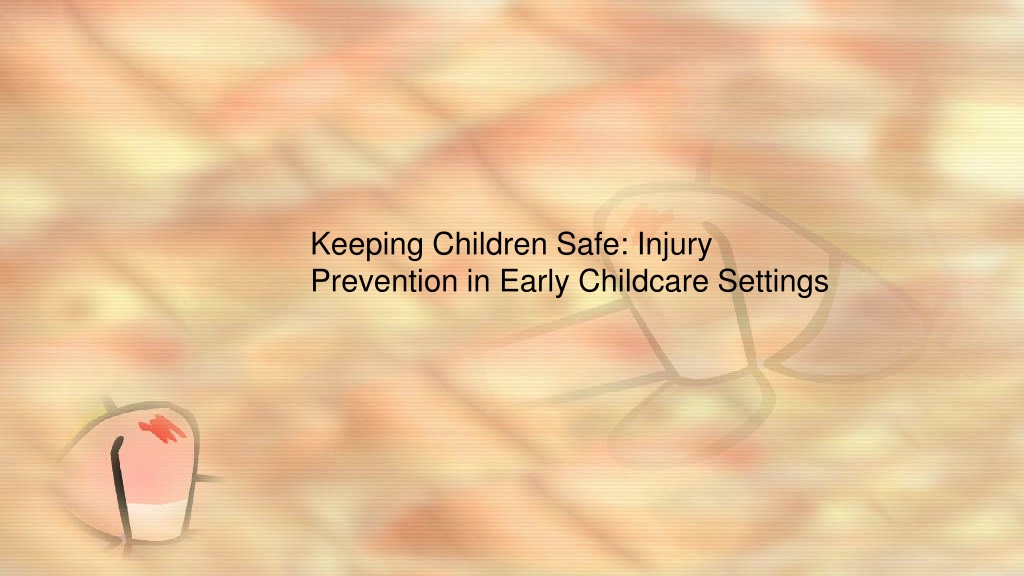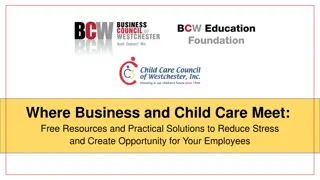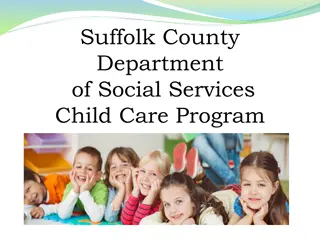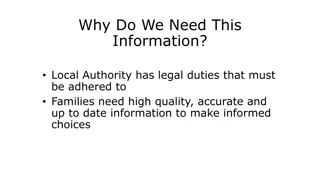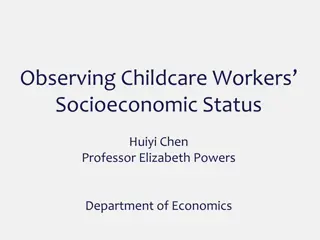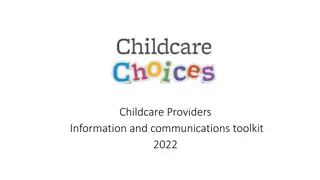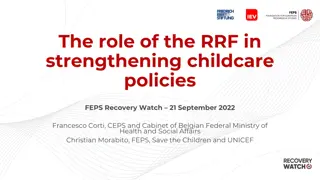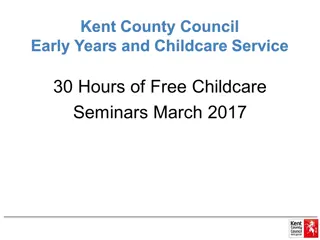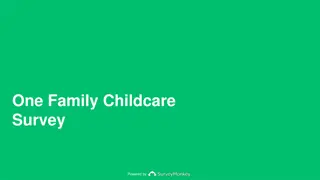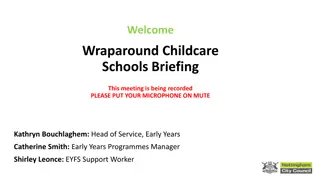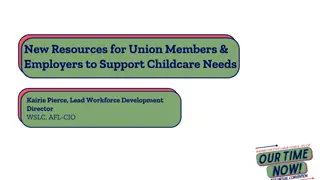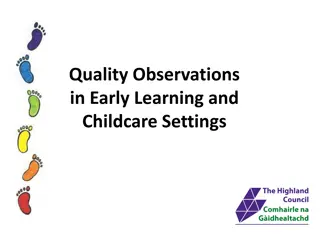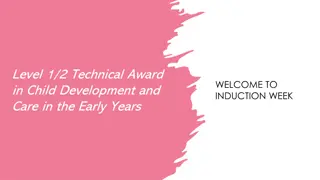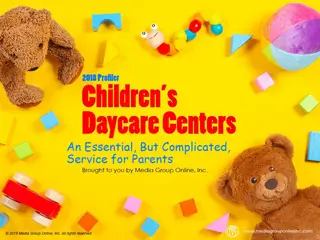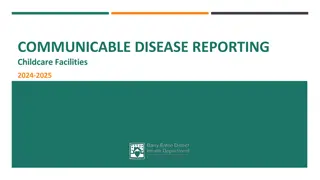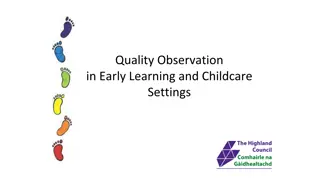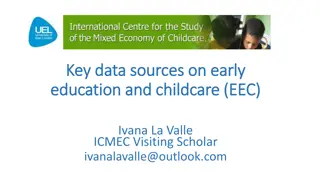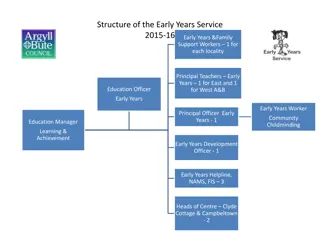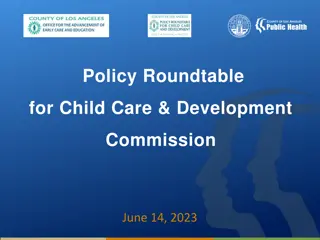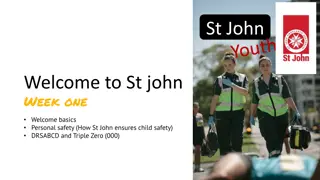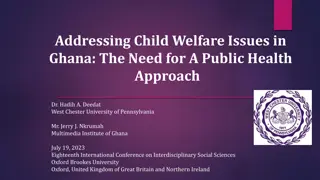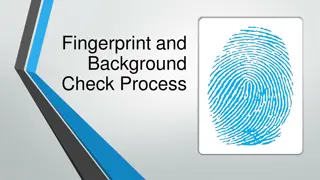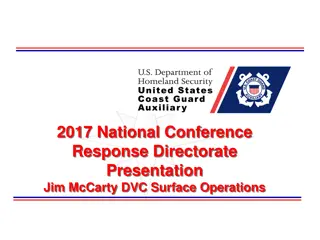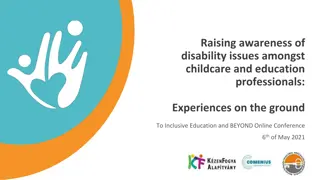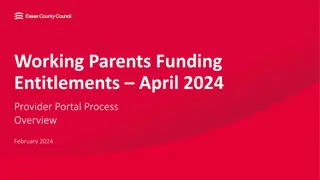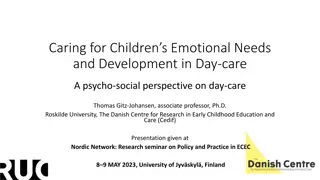Child Safety and Prevention in Early Childcare Settings
This content outlines the standards and requirements for ensuring child safety and preventing maltreatment in early childcare settings, emphasizing the importance of reporting suspicions of child abuse or neglect. It covers guidelines related to staff conduct, prohibition of harmful practices, and legal obligations for reporting any concerns. Adherence to these standards is crucial for maintaining a safe and nurturing environment for children in care.
Download Presentation

Please find below an Image/Link to download the presentation.
The content on the website is provided AS IS for your information and personal use only. It may not be sold, licensed, or shared on other websites without obtaining consent from the author. Download presentation by click this link. If you encounter any issues during the download, it is possible that the publisher has removed the file from their server.
E N D
Presentation Transcript
Keeping Children Safe: Injury Prevention in Early Childcare Settings
Early Head Start Standards Code of Conduct Performance Standard: 1302.90(c)(1)(i-v), 1302.90(c)(2), 1302.92(b)(2), 1302.103 (d)(ii), 1303.20 Minimum Standards: 746.1309(c), 746.1311, 746.501(25), 746.901(10), 746.1303(3) Purpose: To establish a method of reporting suspected or known child maltreatment in compliance with applicable Federal, State Texas Family Code Section 261.101, or Tribal laws. All UTRGV-PSJAEHS-CCP Program employees must adhere to protecting the privacy of the child.
Early Head Start Standards Code of Conduct 1302.90 (C)(1)(ii) (1) A program must ensure all staff, consultants, contractors, and volunteers abide by the program s standards of conduct that: (ii) Ensure staff, consultants, contractors, and volunteers do not maltreat or endanger the health or safety of children, including, at a minimum, that staff must NOT: (A) Use corporal punishment; (B) Use isolation to discipline a child; (C) Bind or tie a child to restrict movement or tape a child s mouth; (D) Use or withhold food as a punishment or reward;
Cont. Standards of Conduct (E) Use toilet learning/training methods that punish, demean, or humiliate a child; (F) Use any form of emotional abuse, including public or private humiliation, rejecting, terrorizing, extended ignoring, or corrupting a child; (G) Physically abuse a child; (H) Use any form of verbal abuse, including profane, sarcastic language, threats, or derogatory remarks about the child or child s family; or, (I) Use physical activity or outdoor time as a punishment or reward;
Cont. Standards of Conduct Section 261.101 of the Texas Family Code Any individual having cause to believe that a child s physical, mental health or welfare has been or may be adversely affected by abuse or neglect by any person is obligated to report immediately, but no later than the 48th hour the person suspects the child has been or may be abused or neglected All Early Head Start staff persons are mandated reporters Legally obligated to report suspected child abuse or neglect Report to Texas Department of Family and Protective Services
Cont. Standards of Conduct By law, professionals may not delegate the duty to report to another person or entity or rely on another person or entity to make the report You are protected by law from liability when you make a report or provide information in good faith during a CPS investigation. (Texas Family Code, Section 261.106) you are not protected from civil or criminal liability if you report your own abuse or neglect of a child or intentionally file a false report against someone else. (Texas Family Code, Section 261.106).
Cont. Standards of Conduct Failure to Report suspected child maltreatment (abuse and neglect) Criminal offense (Texas Family Code, Section 261.106) Punishable by either a fine or imprisonment or both Child makes an outcry of child maltreatment Do not have child repeat it others Child has visible bruises or physical trauma to his/her body DO NOT show others Having the child repeat or displaying the bruises/physical trauma can further stress and humiliate the child. Do not try to investigate, do not take photos or video of the child and do not confront the suspected abuser.
UNDERSTANDING INJURIES Injuries occur as a result of unsafe conditions the following factors may influence the risk of injury: Environment; Participation in activities not developmentally appropriate; Lack of adult supervision; Age & sex of children; Child- Staff ratio; Field trips; Playground equipment; and Supervision
EHS-UTRGV and Active Supervision EHS- UTRGV believes that by creating a safe learning environment and using Active supervision strategies; Children will feel safe and enable them to learn and develop to their full potential.
PREVENTING CHILDHOOD INJURIES Injury is the leading cause of childhood death and disability. Injuries result from an unsafe encounter between a child, the cause of the injury, and the environment. Injuries are related to child development: Injuries result from a child's growing, developing, and exploring the environment. A child's risk for injury and the measures needed to prevent injury differ according to: Child's age and Development.
Understanding the Causes of Injuries from a Scientific Perspective Injuries can be understood according to the model of diseases. Injuries result from the interaction of three factors: the child, the cause (or agent), and the environment. The relationship between these three factors is described as the "Injury Triangle:"
Active Supervision Performance Standard: 1302.47(a), 1302.47(b)(5)(i-v) Minimum Standards: 746.1205 Purpose: To promote active supervision and ensure the safety of children at all times. This policy explains and covers appropriate supervision of children while in the care of Early Head Start Centers and Child Care Partnerships and applies to all Early Head Start staff and volunteers responsible for the supervision of children in our EHS programs.
Cont. Active Supervision 1302.47 (a): (a) A program must establish, train staff on, implement, and enforce a system of health and safety practices that ensure children are kept safe at all times 1302.47(b)(5)(i-v) Safety practices. All staff and consultants follow appropriate practices to keep children safe during all activities, including, at a minimum
1302.47(b)(5)(i-v) Safety Practices (i) Reporting of suspected or known child abuse and neglect, including that staff comply with applicable federal, state, local, and tribal laws; ii) Safe sleep practices, including ensuring that all sleeping arrangements for children under 18 months of age use firm mattresses or cots, as appropriate, and for children under 12 months, soft bedding materials or toys must not be used; (iii) Appropriate indoor and outdoor supervision of children at all times; (iv) Only releasing children to an authorized adult, and; (v) All standards of conduct described in 1302.90(c).
Active Supervision Strategies: 1. Set up the environment 2. Position staff 3. Scan and count 4. Listen 5. Anticipate children's behavior 6. Engage and redirect
Active Supervision Requires focused attention and intentional observations at all times Teaching staff will enforce a system of health and safety practices that ensure children are kept safe at all times Staff will maintain safety practices for infants, toddlers, and preschool children, in classrooms and outdoors EHS Staff will communicate with each other when staff enter or exit a classroom for any reason including relieving for breaks, or when children are moving from one location to another (bathroom, speech therapy, or have arrived or left for the day).
Active Supervision The EHS staff member entering the classroom or outside area will recount staff will develop plans for regular routines, such as drop-off and pick up times, including staff assignments (who will monitor the door) Staff will physically walk around the classroom and communicate with each other the count before they are transitioning out of the classroom.
Active Supervision Indoors Teaching staff will engage in supervision practices by zoning the classroom. Zoning is a strategy used by teachers to organize teachers and the classroom environment. Staff will place themselves so that they can see and hear all of the children in their care. Zoning Staff will carefully plan where they will position themselves in the environment. Staff will be able to account for the children in their care. Staff will frequently scan and count the children continuously to know where everyone is and what they are doing
Active Supervision Transition Prepare children to move from one activity to another by providing verbal (5 minutes until snack) and non- verbal cues (showing pictures of next activity) before transitions. Plan for what each adult will be responsible for during the transition. Rest Time-Napping Children should be directly supervised by sight and sound at all times. This includes when children are going to sleep, sleeping, or in the process of waking up.
Active Supervision Toileting Children will be supervised during toileting/bathroom needs. Staff should be able to hear and see all children. Staff will be present to supervise hand washing and make sure other sanitation procedures are followed Children s Behavior Staff will use what they know about each child s individual interests and skills to predict what the child might do. For children who require closer supervision due to special needs, developmental needs and/or social needs will receive more specifically planned supervision. Information provided from the daily health check (illness, lack of sleep or food etc.) will help staff anticipate children s behavior.
Active Supervision Engage and Redirect One teacher will always be actively engaged in group site/sound supervision at all times. Staff wait until children are unable to problem-solve on their own to get involved. Outdoors Teaching teams must work together to identify hot spots where children usually need assistance or where adults have a hard time seeing children. Staff will be spread out watching, listening, and interacting positively with children. Staff should be careful not to have long discussions with colleagues or intense play with a child or small group of children while supervising a zone. Staff will be positioned according to high risk areas.
